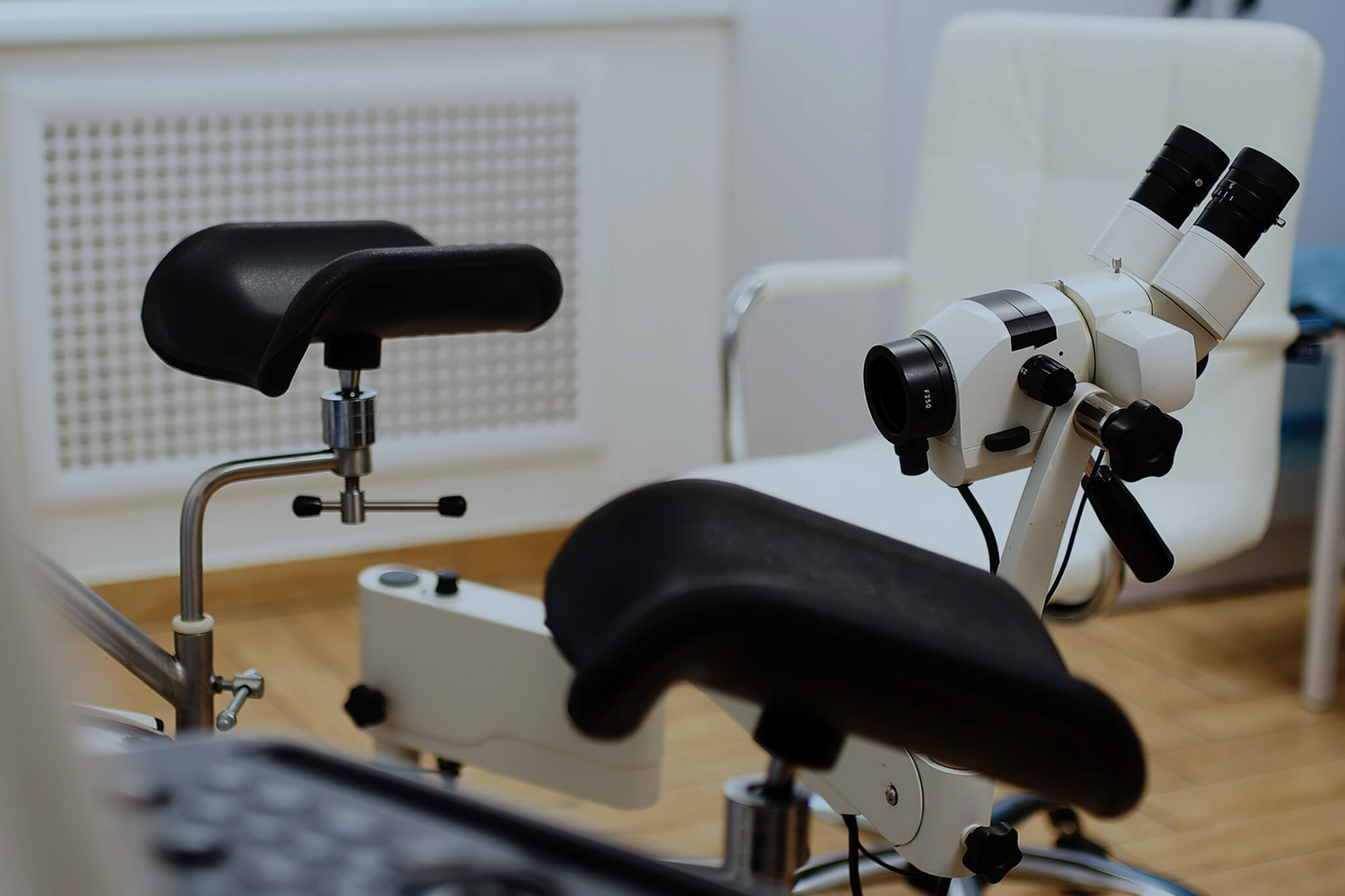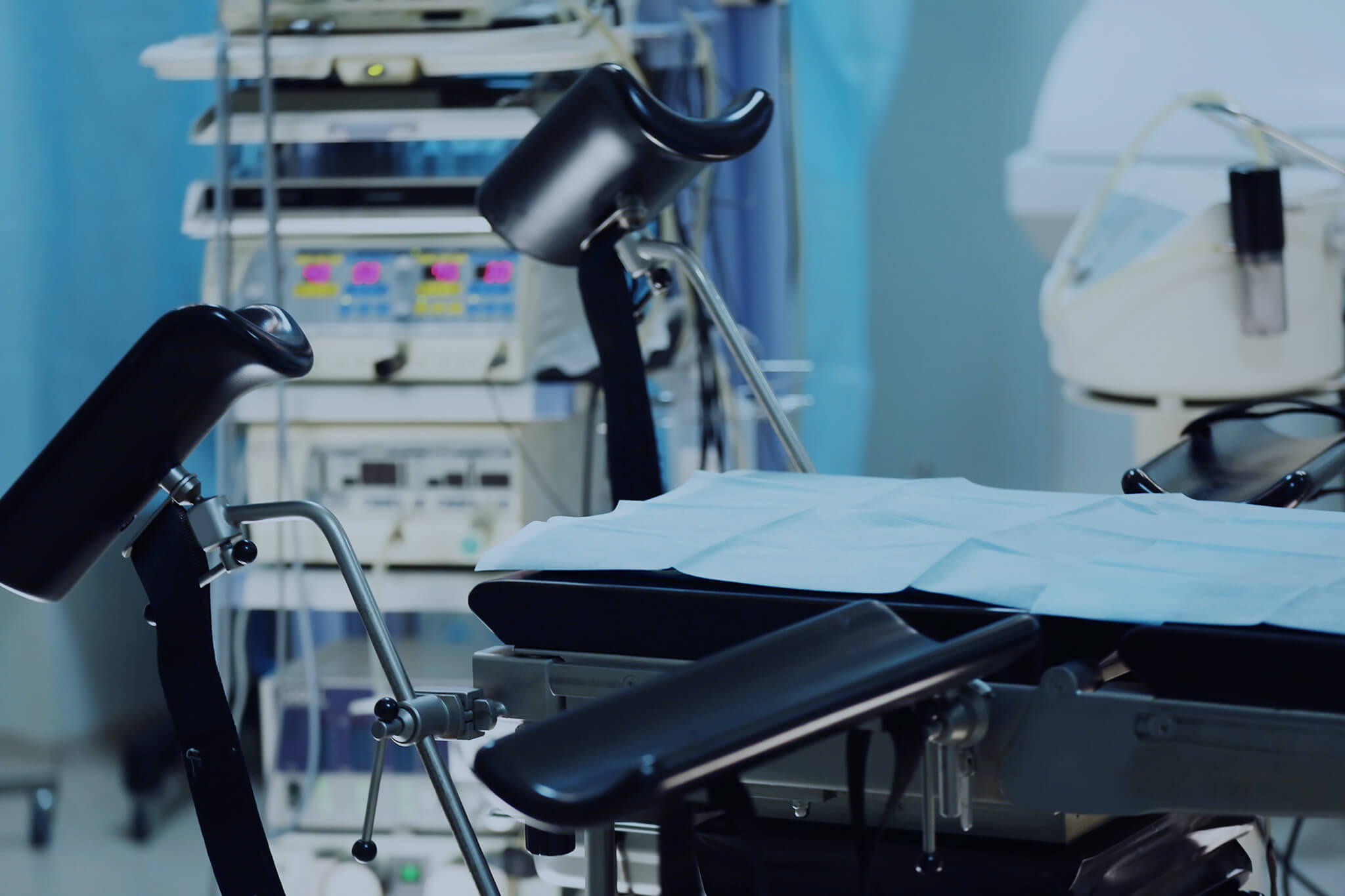Laser Colposcopy Procedure
This article explains how laser colposcopy works, where it fits among colposcopy surgery options, and what clinicians, hospital teams, and device distributors should know before adopting colposcopy laser treatment in everyday practice.
Evolution of Colposcopy Treatments
Early laser experiments in the 1980s used continuous wave CO₂ beams to vaporize cervical intraepithelial neoplasia (CIN).
Modern diode and solid-state platforms refine power delivery and cooling, delivering a 200µm spot with <0.6mm penetration for tissue-sparing ablation.
A published series report shows 93-96% clearance of CIN after laser conization, which is slightly higher than the 92% reported for cold-knife excision.
Coupled with low stenosis and infection rates (see below), these results have pushed laser colposcopy from specialist centers into routine outpatient practice.

When to Consider Laser Colposcopy Procedures
Laser ablation is not recommended for invasive carcinoma, glandular disease extending into the endocervical canal, or pregnancy.
Clinicians typically reserve laser colposcopy for patients with:
- CIN 1-2 lesions that are visible and confined to the ectocervix.
- Recurrent low-grade changes after prior ablative therapy.
- High-grade transformation zones where a loop excision could remove excessive stroma.
- Vaginal intraepithelial neoplasia (VAIN) that lies within reach of the colposcope.
Clear selection criteria help teams maximize efficacy while maintaining safety during laser colposcopy treatment.
How Laser Colposcopy Differs from Standard Colposcopy Procedures
The diagnostic component of the treatment, which includes an acetic acid wash, green filter, and graded magnification, remains unchanged. The differences appear once the lesion is mapped:
- Laser Selection: Most gynecologists choose a continuous-wave CO₂ or 980nm diode laser. Both have shallow penetration (≤0.6mm) that spares deeper cervical stroma.
- Beam Delivery: A colposcopy-mounted micromanipulator aligns the laser beam with the binocular view, letting the surgeon track tissue changes in real time.
- Energy Density: Typical settings range from 8-12W continuous or 15-25J/cm² in pulsed mode. Lower fluence minimizes charring and preserves histologic borders for audit.
- Ablation Depth: One pass removes roughly 0.5mm. Surgeons spiral outward until blanching reaches 7-8mm beyond the lesion edge, ensuring complete removal.
By combining visualization with immediate therapy, laser colposcopy procedure times take an average of 15-20 minutes versus two separate 10 to 15-minute visits for biopsy and subsequent LEEP.
Laser Colposcopy Equipment Essentials
Before offering laser colposcopy, clinics need:
- A surgical-grade CO₂ or diode laser console, readily available through IML’s portfolio, rated for cervical ablation.
- Micromanipulator adapter that couples to the existing colposcope.
- Smoke evacuation with inline ULPA filtration as laser plume can contain aerosolized HPV DNA.
- Protective eyewear matched to the laser wavelength for all staff and the patient.
- Disposable laser-safe specula and drapes to avoid beam reflection.
Most facilities already performing outpatient hysteroscopy or laparoscopy can repurpose their smoke management and protective equipment, limiting capital outlay mainly to the laser and adapter.

Step-By-Step Laser Colposcopy Procedure
A structured protocol improves outcomes and simplifies staff training.
The outline below reflects common practice in North American centers.
Pre-Procedure Review
Confirm recent Pap and HPV results, rule out pregnancy, and agree on an analgesia plan.
Obtain informed consent that explains the aims of colposcopy laser treatment and outlines possible risks such as bleeding, infection, or cervical stenosis.
Patient Positioning
Place the patient in dorsal lithotomy using a reusable or disposable laser-safe speculum.
Instill 3% acetic acid and wait two minutes for acetowhite changes that make abnormal epithelium stand out.
Lesion Mapping
With 10-15 times magnification and a green filter, trace vascular patterns and lesion borders in real time.
Record size and location on a standardized diagram to guide treatment and support audit.
Laser Calibration
Test-fire the beam into wet gauze to confirm the spot size and output.
Fine-tune the micromanipulator until the focal point aligns perfectly with the cervical surface.
Ablation Pass
Begin at the lesion center and spiral outward at a steady pace, avoiding overlaps.
Short pauses between passes limit the thermal spread and reduce charring.
Hemostasis Check
Inspect the field for charred spots and irrigate lightly with saline to clear debris.
Reseal any oozing vessels with a brief 0.3-second pulse at 4W.
Post-Treatment Rinse
Neutralise residual acetic acid with a saline wash.
Coat the ablated area with a thin layer of hydroxypropyl cellulose gel to encourage epithelial healing.
Recovery and Discharge
Monitor the patient for ten minutes before ambulation.
Provide written instructions covering activity limits, expected spotting, and warning signs that warrant immediate contact.

Clinical and Operational Benefits of a Laser Colposcopy Procedure
Multiple advantages drive the adoption of laser colposcopy across outpatient gynecology. These include:
- One Visit: Eliminating a return appointment improves adherence and shrinks wait lists.
- Low Bleeding Risk: Laser coagulation seals microvasculature instantly, reducing intra- and post-operative hemorrhage compared with wire loop excision.
- Precision: A 200µm focal spot enables sub-millimeter control, sparing the surrounding stroma and reducing stenosis rates, especially valuable in nulliparous patients.
- Histologic Integrity: Unlike LEEP, which can distort margins, the laser vaporizes tissue without thermal dragging, aiding pathologic review of adjacent biopsies.
- Cost Efficiency: Reusable fiber or articulated arms minimize the use of consumables. One fewer clinic visit saves administrative labor and room turnover.
Hospital operations teams also note smoother scheduling because the same procedural room accommodates diagnosis and therapy, freeing OR time for more complex gynecologic cases.
Safety Considerations of Laser Colposcopy Procedures
Laser colposcopy shares the general risk profile of ablative cervical therapies, with a few laser-specific points:
- Plume control is essential. Smoke evacuation should maintain a face velocity of 25 ft/min.
- Thermal injury beyond target depth is rare but possible if power settings exceed 15W continuously. The low learning curve with the laser technology helps minimize this.
- Pregnancy remains a contraindication due to potential cervical incompetence.
- HPV vaccination status does not alter suitability, but it offers reassurance regarding long-term recurrence rates.
Complication data show comparable infection rates (<1%) to cryotherapy and lower recurrence rates than cold-knife conization for CIN 2 lesions over a five-year period.
Post-Procedure Care
Patients may experience mild watery discharge for up to three weeks. Standard guidance includes:
- Avoiding intravaginal products and intercourse for two weeks.
- Using NSAIDs as needed for cramps.
- Scheduling a test-of-cure visit at six months with HPV co-testing and cytology.
- Long-term surveillance at 12 and 24 months, even if HPV is negative, and immunocompromised patients may need even closer follow-up.
Clear written protocols help nursing teams offer consistent advice, reducing unplanned calls and readmissions.

Training Requirements for Laser Colposcopy
Gynecologists already proficient in diagnostic colposcopy usually require a short upskilling pathway:
- Didactic course on laser physics, plume safety, and wavelength-specific tissue interaction.
- Supervised cases (typically 10) under an experienced laser surgeon.
- Proctor sign-off and maintenance of a logbook for hospital privileging.
Regional surgical societies often accept laser colposcopy experience toward broader gynecologic laser certification, simplifying the long-term credential renewal.
Future Direction
Narrow-band imaging and AI-guided colposcopic analysis are already refining lesion mapping and triage, while diode lasers equipped with photoacoustic feedback promise real-time depth control, which will further standardize outcomes.
These advances amplify laser colposcopy’s core advantage (i.e., precise, hemostatic ablation delivered the moment pathology is confirmed), so patients face fewer visits and faster recovery, clinics benefit from streamlined workflows and lower consumable use, and cervical anatomy is preserved better than with older colposcopy surgery techniques.
As each new technology matures, laser colposcopy is on track to become the routine standard of care, marrying efficient, patient-centered treatment with sustainable clinic economics.
Key Takeaway for Surgical Teams and Device Buyers
Laser colposcopy pays for itself only if it delivers practical advantages inside the procedure room and on the balance sheet.
The points below distill what matters most when clinicians weigh workflows and administrators assess capital budgets:
- Single-Visit Efficiency: Combining diagnosis and therapy in one sitting frees up clinic slots and shortens wait lists, especially in high-volume gynecology units.
- Consistent Clinical Outcomes: A 200µm spot, shallow penetration, and real-time visual control translate into ≤1% post-procedure bleeding and ≥95% CIN clearance in the published series.
- Minimal Consumables: Reusable fibers or articulated arms reduce per-case costs compared with loop electrodes and disposable tips.
- Rapid Learning Curve: Colposcopists typically reach proficiency after a short didactic and 10 supervised cases, so staff redeployment is limited.
- Built-In Safety: ULPA smoke evacuation, wavelength-matched eyewear, and photoacoustic depth feedback help meet OR safety standards without significant workflow changes.
- Favorable ROI: Clinics that perform five combined diagnostic-therapeutic sessions per week often recover the costs of lasers and micromanipulators quickly through increased throughput and fewer follow-ups.
Get in touch with Us
If you’d like to match a CO₂ or diode platform to your colposcopy workflow, connect with an IML specialist today.
